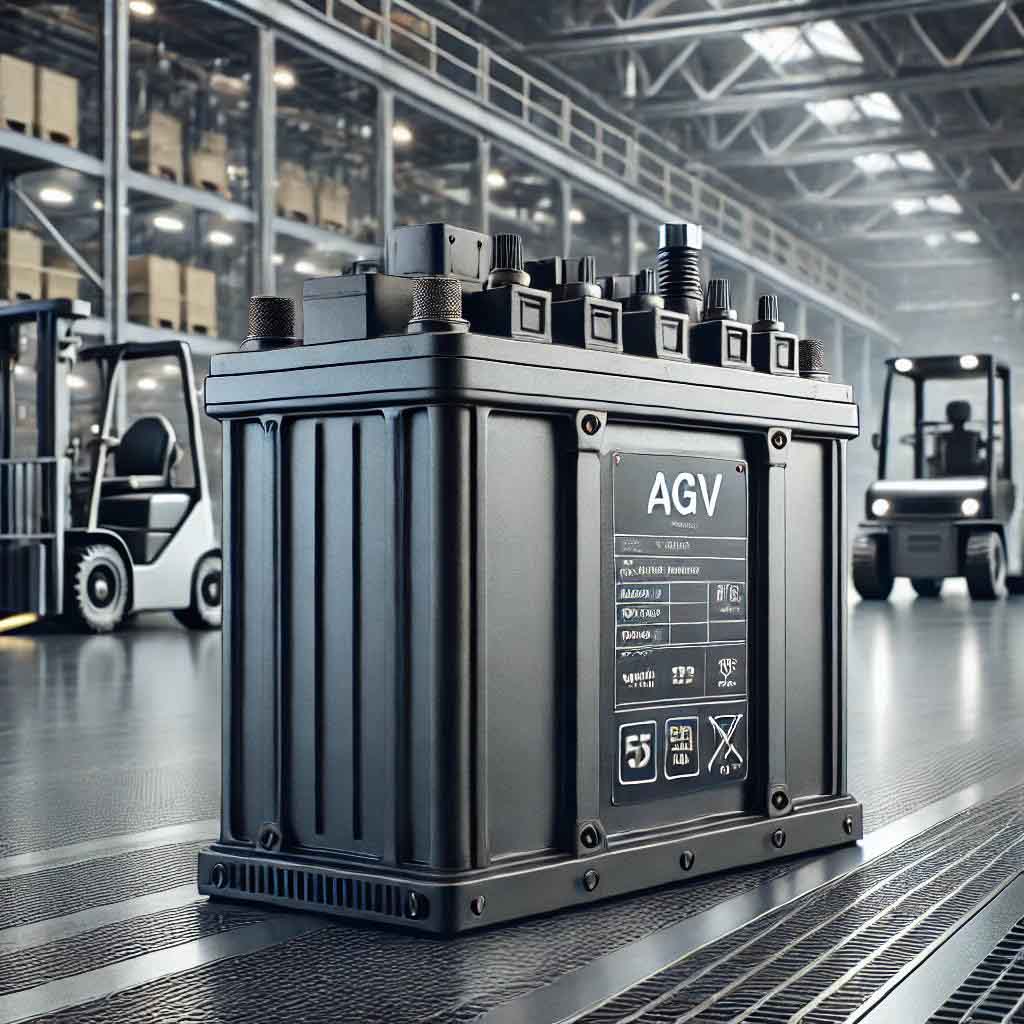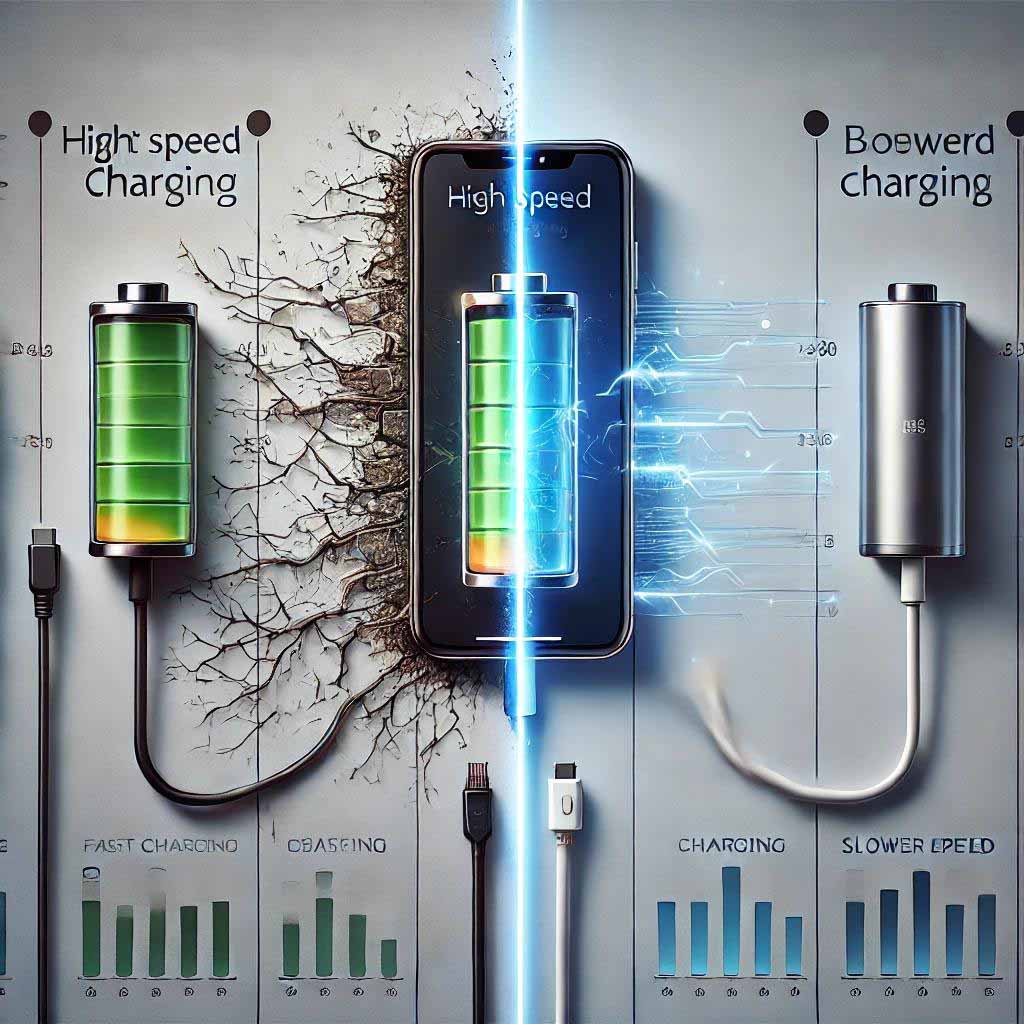Call Us Now
TEL: +86-4000988557; Skype ID: gfreex@hotmail.com;
WeChat: Troysupply_com; QQ ID: 8936906.

From understanding the specific requirements of your AGV fleet to aligning battery performance with operational demands, industrial battery charger manufacturer TL Power will guide you through the various options available and the key factors to consider when choosing the best battery for your automated fleet.
Batteries are at the heart of AGV systems, driving everything from movement to advanced functionalities. The market offers several types of batteries, each with its own set of characteristics and advantages. Here’s an overview of the most common AGV battery types:
● Lead-Acid: Traditional and cost-effective but heavy, with shorter lifespans.
● Lithium-Ion: Known for their longer life and faster charging, but at a higher cost.
● Nickel-Cadmium (NiCd): Durable and reliable but environmentally unfriendly due to cadmium.
● Nickel-Metal Hydride (NiMH): Offers better environmental sustainability but typically has a shorter lifespan compared to lithium-ion.
● Fuel Cells: An emerging technology that offers quick refueling but comes with high initial investment costs and specialized infrastructure requirements.
Lead-acid batteries have been the go-to choice for decades. These batteries are relatively low-cost, making them an attractive option for AGV fleets on a budget. They are simple to replace and maintain, making them accessible even for small to mid-size businesses.
Advantages:
● Lower upfront costs
● Easy to replace and widely available
Disadvantages:
● Heavier and bulkier, which can affect AGV speed and handling
● Shorter lifespan, often leading to higher replacement frequency
Lithium-ion (Li-ion) batteries have quickly become a preferred choice for AGVs due to their performance efficiency and durability. They offer faster charging times, higher energy density, and a longer lifespan compared to traditional lead-acid batteries. However, they do come at a higher upfront cost.
Advantages:
● High energy density, meaning more power in a lighter package
● Longer lifespan and faster charging
Disadvantages:
● Higher upfront costs
● Complex charging management systems may be required to maintain efficiency
Nickel-cadmium (NiCd) and Nickel-Metal Hydride (NiMH) batteries, while not as popular as lithium-ion or lead-acid, still serve specific niches within the AGV industry. NiCd batteries are known for their rugged durability and ability to perform in extreme conditions, while NiMH batteries offer a more environmentally friendly option with decent energy density. However, both types lag behind lithium-ion in terms of efficiency and lifecycle.
Nickel-Cadmium Advantages:
● Durable and reliable
● Perform well in extreme conditions
Nickel-Cadmium Disadvantages:
● Contains toxic cadmium, making disposal a challenge
Nickel-Metal Hydride Advantages:
● Environmentally safer than NiCd
● Good energy density
Nickel-Metal Hydride Disadvantages:
● Shorter lifespan compared to lithium-ion
● Higher maintenance needs

Selecting the right battery is crucial for ensuring smooth operations and minimizing downtime. Here are some of the key factors you should consider:
● Battery Lifespan: Longer-lasting batteries reduce the frequency of replacements, saving costs in the long run.
● Energy Density: Higher energy density allows for more power in a smaller, lighter package, which is ideal for AGVs with space and weight constraints.
● Charging Time: Faster charging times lead to less downtime and more operational efficiency.
● Maintenance Requirements: Batteries with lower maintenance needs will reduce labor costs and machine downtime.
● Environmental Conditions: Consider how well the battery type will perform in your operational environment, including temperature, humidity, and exposure to harsh conditions.
Battery capacity directly influences the operational runtime and overall efficiency of your AGVs. Simply put, the higher the capacity, the longer an AGV can operate before needing to recharge. However, selecting the right capacity involves more than just picking the highest available number. You must consider the workload, usage patterns, and charging opportunities in your operations to ensure you are not over- or under-powering your fleet.
To calculate the optimal battery size for your AGVs, you should analyze how much power they consume during an average operational cycle. For instance, heavy-duty AGVs that carry large loads or operate for long hours will require batteries with higher capacity, while light-duty AGVs with shorter cycles or smaller payloads may benefit from lower-capacity, cost-efficient options.
A balance between capacity and operational needs is crucial—oversized batteries can add unnecessary weight and costs, while undersized batteries may lead to frequent downtime and reduced productivity.
When it comes to high-performance AGVs, battery selection becomes even more critical. AGVs operating in high-duty cycles, such as those in heavy manufacturing or 24/7 warehouse environments, need robust, efficient batteries that can withstand continuous usage.
For AGVs in heavy-duty applications, durability, power, and efficiency are paramount. The following battery types are typically recommended for such use cases:
● Lithium-Ion: Offers the best balance of power, longevity, and quick recharge times. Ideal for AGVs that need to minimize downtime.
● Fuel Cells: Provide continuous power and can be refueled quickly, making them suitable for environments where AGVs operate without much break time.
● Lead-Acid (Industrial-Grade): While heavier and bulkier, they offer a cost-effective option for fleets with lower capital investment capabilities.
For lighter-duty AGVs, which generally handle smaller loads or shorter cycles, battery cost-efficiency becomes more important than pure power. Here are the most suitable options:
● Nickel-Metal Hydride (NiMH): These batteries offer good energy density and are environmentally friendly, making them ideal for operations that prioritize sustainability.
● Lead-Acid: Still a viable option for light-duty AGVs where cost is a priority, as these batteries are inexpensive and easy to replace.
● Lithium-Ion (Small Capacity): If your AGV fleet demands reliability and quick charging, but operates under lower power loads, lithium-ion batteries with smaller capacity may be the best investment.

The way you charge your AGV batteries has a significant effect on their lifespan. Improper charging habits can reduce a battery's operational life and increase maintenance costs over time. There are several charging methods available, each with its own set of benefits and drawbacks:
● Fast Charging: While this method quickly replenishes the battery, it can generate excess heat and reduce the battery's overall lifespan if used too frequently.
● Opportunity Charging: This method involves charging the battery during short breaks or pauses in AGV operation. It's ideal for AGVs with irregular usage patterns but may not fully recharge the battery in one go.
● Slow/Trickle Charging: This method is gentler on the battery and helps extend its lifespan by providing a steady, low-intensity charge over a longer period.
Choosing between fast and slow charging depends on your AGV fleet’s operational demands. For AGVs that run constantly with little downtime, fast charging may be necessary to maintain productivity. However, slow charging is the better option for AGVs with more extended breaks, as it helps preserve battery life.
Fast Charging:
● Pros: Minimizes downtime, ideal for high-intensity operations
● Cons: Can reduce battery lifespan due to heat generation and increased wear
Slow Charging:
● Pros: Extends battery life, ideal for fleets with downtime or shift-based operations
● Cons: Longer charging periods can affect operational readiness
Proper maintenance is essential for ensuring that AGV batteries function efficiently and last as long as possible. Regular care can prevent breakdowns, reduce wear, and ultimately save on replacement costs. Here are some key maintenance tips for AGV batteries:
● Regular Inspections: Conduct routine checks to ensure that there are no leaks, cracks, or other visible signs of damage.
● Keep Terminals Clean: Dirty or corroded terminals can reduce the battery’s efficiency and cause performance issues.
● Manage Temperature: Batteries operate best within specific temperature ranges, so it’s important to monitor and manage operating conditions.
● Optimal Charging Cycles: Avoid overcharging or deep discharging to maximize battery lifespan.
Over time, AGV batteries will begin to degrade, impacting both performance and lifespan. It’s important to recognize the early signs of battery wear to avoid unexpected downtime or battery failure. Common symptoms of battery degradation include:
● Decreased Run Time: The AGV may start requiring more frequent charging as the battery loses its capacity.
● Inconsistent Voltage Levels: Fluctuations in power output may indicate that the battery is struggling to maintain a consistent charge.
● Increased Charging Time: If a battery starts taking longer to reach a full charge, it’s a sign that its efficiency is declining.
To get the most out of your AGV batteries, it's essential to follow best practices for extending their lifespan. Here’s a step-by-step guide to prolonging the life of your AGV battery:
1. Avoid Deep Discharge: Batteries should not be allowed to fully deplete, as this can shorten their lifespan. Set up systems to recharge when the battery hits around 20-30% capacity.
2. Implement Regular Charging: Try to maintain a consistent charging routine, avoiding large fluctuations in charge levels.
3. Maintain Proper Operating Temperatures: Ensure the operating environment is within the recommended temperature range to prevent overheating or freezing, which can reduce battery performance.
4. Monitor and Maintain Charge Cycles: Use battery management systems to track and optimize charge/discharge cycles for maximum efficiency.
How Does Temperature Affect AGV Battery Performance?

Temperature plays a critical role in determining battery efficiency and longevity. Operating AGV batteries outside of their optimal temperature range can lead to performance issues and a shorter lifespan.
For example:
● High Temperatures: Can cause batteries to overheat, reducing their efficiency and lifespan.
● Low Temperatures: Can slow down chemical reactions within the battery, decreasing its overall performance.
Here are the optimal temperature ranges for various battery types:
● Lithium-Ion: 20-25°C (68-77°F)
● Lead-Acid: 15-30°C (59-86°F)
● Nickel-Metal Hydride: 10-30°C (50-86°F)
Maintaining your AGVs in a controlled environment will help ensure that batteries perform efficiently and last longer.
Proper disposal and recycling of AGV batteries are not only critical for environmental sustainability but also for complying with regulations. Different types of batteries require specific handling procedures due to the materials they contain. Here’s how to safely dispose of and recycle different AGV battery types:
● Lead-Acid Batteries: These are highly recyclable, with most of the materials being reusable. They should be sent to certified recycling centers where the lead, plastic, and sulfuric acid are properly processed.
● Lithium-Ion Batteries: These batteries contain valuable materials like cobalt, nickel, and lithium, which can be reclaimed. However, they also present a fire hazard if damaged, so they must be handled by specialized recycling facilities.
● Nickel-Cadmium (NiCd): Due to the presence of toxic cadmium, NiCd batteries should never be thrown in regular waste. Instead, they need to be sent to designated hazardous waste facilities that can handle toxic materials.
● Nickel-Metal Hydride (NiMH): These are less harmful to the environment than NiCd batteries but still require recycling at proper facilities to recover the nickel content.
When disposing of AGV batteries, always follow local and national regulations to ensure compliance with environmental laws.
Lithium-ion batteries offer several distinct advantages that make them a popular choice for AGV operations, especially in high-performance and high-efficiency environments. Some of the key advantages include:
● Longer Lifespan: Compared to lead-acid and NiCd batteries, lithium-ion batteries have a significantly longer cycle life, reducing the need for frequent replacements.
● Higher Energy Density: Lithium-ion batteries pack more energy into a smaller, lighter package, making them ideal for AGVs where weight and space are concerns.
● Faster Charging: With advanced charging capabilities, lithium-ion batteries can be charged quickly, minimizing downtime and maximizing operational efficiency.
● Lower Maintenance Requirements: Lithium-ion batteries don’t require as much regular maintenance as lead-acid batteries, reducing labor costs and operational interruptions.
When considering AGV battery costs, it’s important to balance the initial purchase price with the long-term operational costs. Here’s an overview of typical price ranges for different battery types:
● Lead-Acid Batteries: These are the most cost-effective upfront, with prices ranging from $100 to $300 per battery, depending on capacity and size. However, their shorter lifespan and maintenance needs can lead to higher long-term costs.
● Lithium-Ion Batteries: These batteries come at a higher initial cost, typically between $500 and $1,500, but they offer longer life and lower maintenance, which can make them more cost-effective over time.
● Nickel-Cadmium and Nickel-Metal Hydride Batteries: These fall between lead-acid and lithium-ion in terms of cost, ranging from $200 to $800, but their environmental impact and maintenance requirements often make them less attractive for long-term use.
● Fuel Cells: The most expensive option, fuel cells can range from $2,000 to $10,000, depending on capacity and infrastructure needs.
While lithium-ion batteries come with a higher upfront cost, the long-term benefits often outweigh the initial expense. Their longer lifespan, faster charging, and lower maintenance requirements make them a solid investment for AGV fleets that prioritize efficiency and uptime. In high-performance environments, the ability to minimize downtime and reduce the need for frequent replacements makes lithium-ion batteries a smart choice.
Maximizing the efficiency of your AGV batteries can significantly improve the overall productivity of your fleet. Here’s a step-by-step guide to optimizing battery usage:
1. Proper Charging Cycles: Stick to optimal charging cycles to avoid overcharging or deep discharging, both of which can reduce battery life.
2. Implement Energy-Saving Modes: Many AGVs come with energy-saving features that reduce power consumption when the vehicle is idle. Ensure these features are enabled.
3. Load Management: Overloading AGVs can lead to excessive battery drain. Make sure that each AGV is operating within its designated load capacity.
4. Regular Monitoring: Use battery management systems to monitor charge levels and health in real-time, preventing unexpected downtime.
Battery Management Systems (BMS) play a crucial role in maintaining the health of AGV batteries and ensuring they operate efficiently. A BMS monitors various parameters such as temperature, voltage, and charge/discharge cycles, helping to optimize the performance and longevity of the battery.
By continuously tracking the battery’s status, a BMS can prevent overcharging, detect faults early, and optimize energy usage. This helps to reduce maintenance costs and extend the battery’s operational life.
When selecting a BMS for your AGV fleet, consider the following key features:
● Real-Time Monitoring: Allows for continuous tracking of battery health and charge levels, preventing sudden failures.
● Charge/Discharge Optimization: Ensures that the battery is charged and discharged at the optimal levels to extend its lifespan.
● Fault Detection: Early detection of faults or irregularities helps avoid costly breakdowns and downtime.

The environmental impact of AGV batteries varies depending on the type of battery used. Lead-acid batteries, for example, have been known to cause environmental damage due to the toxic lead and sulfuric acid they contain. However, many of these materials can be recycled, reducing their overall footprint.
Lithium-ion batteries, while more environmentally friendly in terms of materials, pose challenges in disposal due to the complex recycling process required for lithium and cobalt. Fuel cells, on the other hand, offer a cleaner alternative but require significant infrastructure investment to become a sustainable option.
When selecting an AGV battery, it’s essential to weigh the environmental impact alongside performance factors, especially for companies prioritizing sustainability.
Handling AGV batteries safely is crucial to prevent accidents and ensure the longevity of the battery. Here are some key safety precautions:
● Avoid Overcharging: Overcharging can lead to overheating and, in extreme cases, cause batteries to catch fire.
● Monitor for Overheating: Batteries that are consistently overheating may be malfunctioning and should be inspected.
● Store Batteries Safely: Ensure that batteries are stored in a cool, dry place to prevent degradation or accidents.
● Proper Ventilation: Batteries like lead-acid emit gases during charging that need to be ventilated properly to avoid buildup.
Choosing a reliable battery supplier is just as important as selecting the right battery. A good supplier can ensure that you have access to quality products, warranties, and after-sales support. Here are key factors to consider:
● Reliability: Ensure that the supplier has a reputation for delivering high-quality batteries on time.
● Warranty: A comprehensive warranty can protect your investment and ensure that you get the most out of your batteries.
● After-Sales Support: Look for suppliers that offer technical support and maintenance services to assist you throughout the battery’s lifecycle.
● Compatibility with AGV Models: Make sure that the supplier’s batteries are compatible with your specific AGV models to avoid compatibility issues.
Choosing the right AGV battery is crucial to maximizing both performance and efficiency in your operations. Whether you opt for the cost-effective lead-acid, the high-performance lithium-ion, or emerging technologies like fuel cells, each battery type offers distinct advantages depending on your specific needs. By carefully considering factors like battery lifespan, energy density, and charging methods, you can make an informed decision that ensures the longevity of your AGV fleet while optimizing productivity and minimizing costs.
AMR Battery;
AMR Robot;
AGV
 Online service
Online service 4000988557
4000988557 sales1@troysupply.com
sales1@troysupply.com sales2@troysupply.com
sales2@troysupply.com gfreex@hotmail.com
gfreex@hotmail.com TROY
TROY 8936906
8936906 Troysupply_com
Troysupply_com